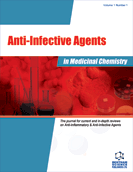Abstract
The ultimate goal of proteome research is the comprehensive description of all proteins present in a given sample using qualitative, quantitative and functional metrics. Traditionally, protein mixtures were first separated by twodimensional gel electrophoresis and spots of interest were excised, in-gel digested and analyzed by mass spectrometry (MS). In most cases, protein identification was done by MALDI-TOF-MS (matrix-assisted laser desorption/ionization time-of-flight). The methodology is time consuming and rarely leads to a comprehensive description of the analyzed proteome. Over the last years shot-gun expression profiling methodologies were developed and can identify thousands of proteins in complex biological samples in a single experiment. We will provide a short historic overview of proteome research and mass spectrometry technologies currently used in the systems biology community. In particular, we will summarize the developments and applications of shot-gun proteomics and allied computational data mining tools to medical research and infectious disease research.
Keywords: mass spectrometers (MS), high pressure liquid chromatography, electrospray ionization, MALDI-TOF-MS, Multidimensional Protein Identification Technology, Mass Spectral Peak Integration
 5
5





















